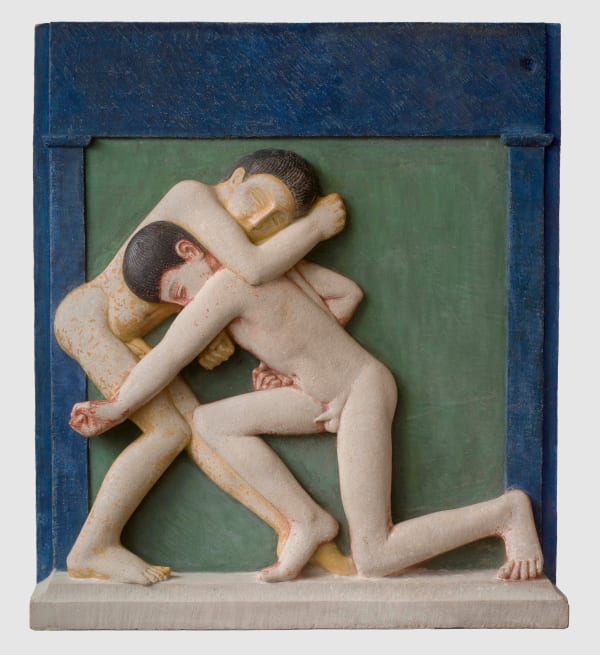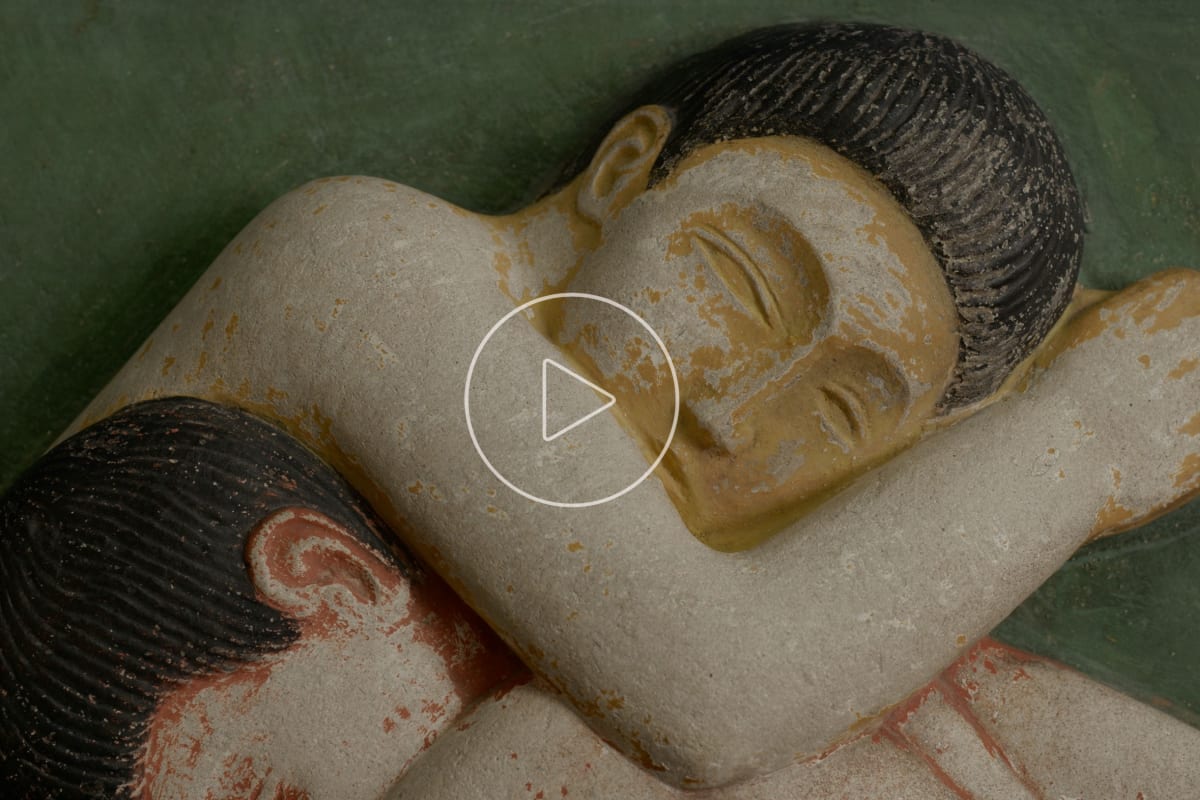Eric Gill
Eric Gill (1882 - 1940)
British sculptor, engraver, typographer, and writer. He began to earn his living as a letter cutter in 1903 and carved his first figure piece in 1910. In 1913 he became a convert to Roman Catholicism and was commissioned to make fourteen relief carvings of the Stations of the Cross for Westminster Cathedral (1914–18). These and the Prospero and Ariel group on Broadcasting House, London (1929–31), are his best-known sculptures.
Gill was one of the chief proponents of direct carving, and his work usually has an impressive simplicity of conception: he wrote that his ‘inability to draw naturalistically was, instead of a drawback, no less than my salvation. It compelled me…to concentrate upon something other than the superficial delights of fleshly appearance…to consider the significance of things.’ In life, as in his work and writing, he was an advocate of a romanticized medievalism, and he tried to revive a religious attitude towards art and craftsmanship. His unconventionality was well known in his own time (he disliked trousers, for example, preferring to wear smocks), but the most bizarre and unpleasant aspects of his life were not revealed until the publication of Fiona MacCarthy’s biography in 1989: he had incestuous relationships with two of his sisters and two of his daughters and sexual congress with a dog (apart from religion, sex is the main subject of his work). Gill was an important figure in book design and typography as well as sculpture. He illustrated many books, and his ‘Perpetua’ and ‘Gill Sans-Serif’ typefaces are among the classics of 20th-century typography. His books include Christianity and Art (1927), Art (1934), and Autobiography (1940).
Text Source: The Oxford Dictionary of Art
For more information and availability of artworks please contact the gallery




